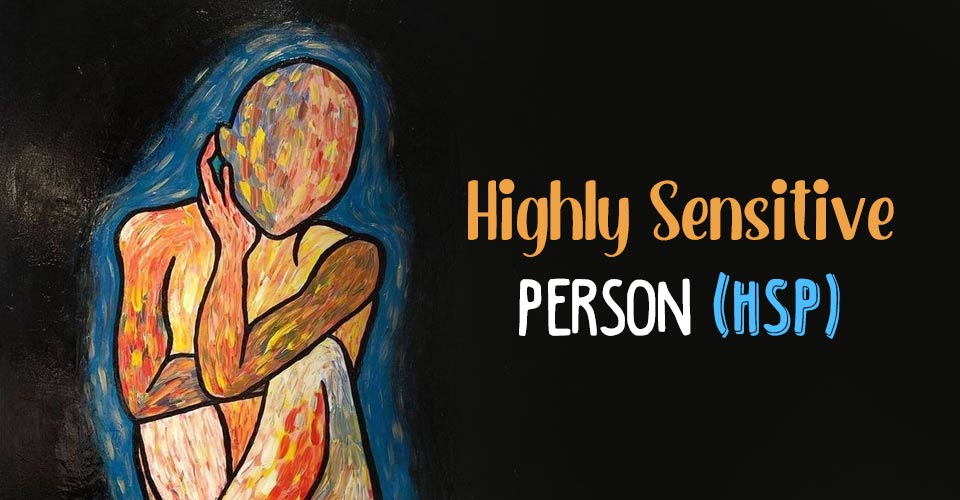The Big 5 personality traits provide a comprehensive framework to understand human personality. These traits include openness, conscientiousness, extraversion, agreeableness, and neuroticism, capturing the fundamental dimensions of individual differences.
What Are The Big 5 Personality Traits?
The Big 5 personality traits, also known as the Five-Factor Model (FFM) [mfn] Jawinski, P., Markett, S., Sander, C., Huang, J., Ulke, C., Hegerl, U., & Hensch, T. (2021). The Big Five Personality Traits and Brain Arousal in the Resting State. Brain sciences, 11(10), 1272. https://doi.org/10.3390/brainsci11101272 [/mfn] , is a widely accepted framework in psychology for measuring personality. It proposes that personality can be described and organized into five broad dimensions, namely, openness to experience, conscientiousness, extraversion, agreeableness, and neuroticism.
Read More About Neuroticism Here
The importance of the Big 5 personality traits lies in its providing a comprehensive picture of an individual’s personality by capturing the fundamental aspects of human personality variation.
Read More About Personality Here
The development [mfn] McCrae, R. R., & John, O. P. (1992). An introduction to the five-factor model and its applications. Journal of personality, 60(2), 175–215. https://doi.org/10.1111/j.1467-6494.1992.tb00970.x [/mfn] of the Big Five personality traits can be traced back to the work of Gordon Allport and his colleagues in the 1930s, who identified numerous personality traits through lexical analysis.
In the 1960s and 1970s, Ernest Tupes, Raymond Christal, and Warren Norman used factor analysis to uncover three primary dimensions of personality: extraversion, neuroticism, and psychoticism. In the 1980s and 1990s, Lewis Goldberg, Paul Costa, Jr., and Robert McCrae expanded the model by adding openness to experience and agreeableness, resulting in the establishment of the present the Big 5 personality traits.
The Big 5 Personality Traits
The Big 5 personality traits encompass five broad dimensions [mfn] Dan, Y., Ahmed, A. A. A., Chupradit, S., Chupradit, P. W., Nassani, A. A., & Haffar, M. (2021). The Nexus Between the Big Five Personality Traits Model of the Digital Economy and Blockchain Technology Influencing Organization Psychology. Frontiers in psychology, 12, 780527. https://doi.org/10.3389/fpsyg.2021.780527 [/mfn] that describe different aspects of personality:
1. Openness
Openness to experience reflects a person’s inclination to explore new ideas and experiences. Those high in openness are imaginative, creative, and open-minded, actively seeking knowledge and intellectual pursuits.
They enjoy novelty and trying new things. In contrast, individuals low in openness prefer routine and familiarity, being more conventional and less interested in exploring the unknown.
2. Conscientiousness
Conscientiousness is marked by traits like organization, responsibility, and self-discipline. Highly conscientious individuals are reliable, diligent, and possess a strong work ethic. They pay attention to details, take initiative, and strive for excellence. They excel in planning and time management.
Conversely, individuals low in conscientiousness may display spontaneity and carefree attitudes. They may face challenges with organization and fulfilling commitments. They tend to be more impulsive and struggle with adhering to routines or schedules.
Read More About Conscientiousness Here
3. Extraversion
Extraversion pertains to individuals’ desire for social interaction and stimulation. Highly extroverted individuals thrive in social settings, gaining energy from being around others. They are outgoing, talkative, and enjoy being in the spotlight.
They tend to be assertive, confident, and easily engage in conversations. In contrast, introverted individuals are more reserved, preferring solitude or smaller social gatherings. They require alone time to recharge and may find large social gatherings tiring.
4. Agreeableness
Agreeableness indicates a person’s tendency towards kindness, empathy, and cooperation. Highly agreeable individuals are warm, friendly, and compassionate. They prioritize harmonious relationships and consider others’ feelings. They are helpful, cooperative, and value interpersonal harmony.
In contrast, individuals low in agreeableness may be more skeptical, competitive, and prioritize their own interests. They may be less concerned about others’ needs and communicate in a more assertive or straightforward manner.
Read More About Agreeableness Here
5. Neuroticism
Neuroticism relates to emotional stability and vulnerability to negative emotions. High neuroticism individuals experience anxiety, mood swings, and emotional distress more easily. They may worry excessively and react strongly to stress.
They often feel sadness, anger, and irritability. Conversely, low neuroticism individuals are generally calm, emotionally resilient, and have effective coping strategies. They are less susceptible to negative emotions, maintaining a stable and balanced emotional state.
Read More About Anger Here
How Are The Big 5 Personality Traits Measured?
The Big 5 personality traits are typically measured using various psychometric instruments [mfn] DeYoung, C. G., Carey, B. E., Krueger, R. F., & Ross, S. R. (2016). Ten aspects of the Big Five in the Personality Inventory for DSM-5. Personality disorders, 7(2), 113–123. https://doi.org/10.1037/per0000170 [/mfn] . One of the most widely used tools is the NEO Personality Inventory (NEO-PI), which assesses the five dimensions of personality: openness to experience, conscientiousness, extraversion, agreeableness, and neuroticism.
Another commonly used measure is the International Personality Item Pool (IPIP), which provides a comprehensive questionnaire assessing the Big 5 personality traits.
The Big Five Inventory (BFI) is another popular tool that measures these traits using a shorter questionnaire. These instruments typically consist of a series of statements or questions that individuals rate on a Likert scale, capturing their levels of agreement or disagreement with each statement. The scores are then calculated to determine the individual’s standing on each of the five personality dimensions.
How Are The Big 5 Personality Traits Associated With Mental Health ?
The importance of the Big 5 personality traits lies in its framework for understanding individual differences in personality. This is crucial for comprehending mental health functioning.
Openness to experience relates to creativity and adaptability, conscientiousness to self-discipline and goal-directed behavior, extraversion to sociability and positive affect, agreeableness to empathy and interpersonal harmony, and neuroticism to emotional instability and vulnerability to stress.
Read More About Stress Here
By understanding these traits, risk factors can be identified, interventions can be tailored, and mental health treatment outcomes can be predicted [mfn] Mann, F. D., Atherton, O. E., DeYoung, C. G., Krueger, R. F., & Robins, R. W. (2020). Big five personality traits and common mental disorders within a hierarchical taxonomy of psychopathology: A longitudinal study of Mexican-origin youth. Journal of abnormal psychology, 129(8), 769–787. https://doi.org/10.1037/abn0000633 [/mfn] . The Big Five personality traits provide a standardized language for studying personality and mental health, offering a holistic understanding that incorporates biological and environmental factors.
The Big 5 Personality Traits And Relationships
The Big 5 personality traits and relationships are intricately related. Extraversion is characterized by sociability and a preference for stimulation, contributing to open communication and a vibrant social life in relationships.
Agreeableness, involving compassion and cooperation, promotes kindness, compromise, and emotional support, leading to healthier and more satisfying relationships. Conscientiousness, associated with organization and responsibility, fosters stability, trust, and dependability, creating a sense of security in relationships.
Neuroticism, representing emotional instability, can increase conflict and stress in relationships, but with effective coping mechanisms and partner support, fulfilling relationships are still possible.
Lastly, openness to experience encourages intellectual stimulation, adventurousness, and growth as a couple, as individuals are curious, creative, and willing to explore new ideas together. Understanding and appreciating these traits can provide insights into relationship dynamics [mfn] Widiger, T. A., & Crego, C. (2019). The Five Factor Model of personality structure: an update. World psychiatry : official journal of the World Psychiatric Association (WPA), 18(3), 271–272. https://doi.org/10.1002/wps.20658 [/mfn] and promote harmonious connections.
Limitations Of The Big 5 Personality Traits
The Big 5 personality traits model, although widely used, may not fully capture the intricate nuances of individual personalities [mfn] Gurven, M., von Rueden, C., Massenkoff, M., Kaplan, H., & Lero Vie, M. (2013). How universal is the Big Five? Testing the five-factor model of personality variation among forager-farmers in the Bolivian Amazon. Journal of personality and social psychology, 104(2), 354–370. https://doi.org/10.1037/a0030841 [/mfn] . Studies further claim that:
- Self-report measures can introduce biases and limited self-awareness.
- Cultural variations may not be adequately represented in the Big Five personality traits model, leading to gaps in understanding diverse personality expressions.
- The Big Five personality traits have limited ability to capture situational variability linked to specific facets of personality.
- Factors like spirituality and moral values may not be fully encompassed within the Big Five framework.
- The framework primarily serves as descriptive tools rather than explanatory models.
At A Glance
- The Big 5 personality traits provide a comprehensive framework for understanding and measuring personality.
- It is also known as the Five-Factor Model (FFM).
- The traits include openness to experience, conscientiousness, extraversion, agreeableness, and neuroticism.
- These traits can be measured using psychometric instruments such as the NEO Personality Inventory (NEO-PI) or the International Personality Item Pool (IPIP).
- Mental health, the Big 5 personality traits, and relationships are intricately related.
- The importance of the Big 5 personality traits lies in its academic and clinical usefulness.
- The Big Five model has limitations, such as potential biases in self-report measures and the inability to capture cultural variations and situational variability.
Frequently Asked Questions (FAQs)
1. What is the difference between MBTI and the Big Five model?
The main difference between MBTI (Myers-Briggs Type Indicator) and the Big Five model is that MBTI categorizes individuals into distinct personality types based on preferences, while Big Five model focuses on five broad dimensions of personality traits.
2. Which one of the Big 5 personality traits is associated with poor relationships?
Neuroticism, one of the Big 5 personality traits, is associated with poor relationships, as it relates to emotional instability and difficulties in managing stress.
3. Which of the Big 5 personality traits are linked to higher life satisfaction?
Conscientiousness and extraversion are the Big Five personality traits that are linked to higher life satisfaction.











Leave a Reply